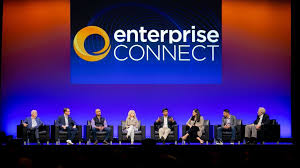What is IoT? Examples and Use Cases of the Internet of Things Across Industries
Time to read: 8 minutes

What is the IoT?
The Internet of Things, or IoT for short, is the concept of connecting physical objects to the Internet so that they can be either controlled or monitored remotely, with the goal of gaining insights that help improve personal or business outcomes. Physical objects can either be connected directly, or via sensors that are attached to the object. Objects can be anything from everyday personal things such as doorbells, thermostats, lights, or watches, to industrial or commercial devices such as solar panels, medical equipment, point-of-sale terminals, factory robots, parking meters, vehicles, all the way to the environment itself: rivers, forests, public spaces, etc.
There is a wide variety of examples for how IoT can add value to businesses and the world. The following paragraphs provide a mostly comprehensive overview of IoT use cases, with short descriptions and value propositions for each.
IoT use cases in healthcare
- On-premise patient experience: Show current load of emergency rooms or general practice rooms to reduce wait times. This helps increase revenue and improve the patient experience.
- Patient monitoring / chronic disease management: Monitor health and activity for chronic disease management and wellness (fitness trackers, other consumer wearables). Also known as telehealth, Real-Time Health Systems (RTHS), or "IoMT" – the Internet of Medical Things. All to reduce readmission rates and improve health outcomes. This helps increase revenue, lower cost, lower business risk, and improve patient experience.
- Independent living: Enable elderly with conditions such as dementia to live alone via drug management, bed sensors, and GPS or movement trackers, to reduce readmission rates and improve health outcomes. Provide them with easy-to-use modern tablets for simple communication needs. This helps increase revenue, lower cost, lower business risk, and improve patient experience.
- Drug management: Control the amount of drugs taken to reduce readmission rates and improve health outcomes. This helps increase revenue, lower cost, lower business risk, and improve patient experience.
- Remote monitoring of medical hardware: Ensure proper performance of medical equipment to predict maintenance before costly repair or replacement and increase machine utilization. This helps reduce cost.
- Smart beds: Monitor beds at home or in hospital for movement, wetting, and similar, and give patients a way to call for help or control the bed, to provide a better patient experience and gather valuable health-related information to improve treatments. This helps reduce cost and improve patient experience.
- Staff operations: Equip hospital staff (doctors, nurses, administration, cleaning) with connected devices (e.g., tablets) to improve staff efficiency. This helps lower cost and improves the employee experience.
- Remote surgery: Perform surgery on a patient even though they are not physically in the same location as the doctor, to increase availability of surgical services. This helps lower cost and increase revenue.
IoT use cases in utilities and energy
- Solar/wind monitoring: Monitor solar and wind energy generation to detect any failure or abnormal decrease in energy efficiency. This helps reduce cost and prevent a potential business disruption, i.e., lowers business risk.
- Solar/wind control: Control the positioning of panels and turbines to optimize location, for maximum power production. This helps increase revenue.
- Water monitoring: Monitor water levels, pressure, turbidity, Ph, salinity, ORP, flow, etc., to prevent overflows, track drinking water supply, and monitor the waste water network and treatment operations. This helps reduce cost and lowers business risk.
- Backup power monitoring: Monitor backup power levels to prevent complete service breakdown due to failure of battery back-up. This helps lower business risk.
- Storage (tanks) monitoring: Monitor oil and gas storage tanks to improve efficiency and cost effectiveness over manual checks. This helps reduce cost.
- Electricity poles monitoring: Monitor major tilting as a result of strong wind, traffic accidents, earth movements, etc. to be able to conduct preventive maintenance. This helps reduce cost and lowers business risk.
- Connected circuit breakers: Add connectivity to circuit breakers to gain new capabilities for metering, analyzing power usage at the edge, and selectively cutting electricity to power-hungry appliances to prevent blackouts. This helps increase revenue and reduce cost.
- Connected meters: Monitor and optimize infrastructure in real time to detect leaks and breakdowns, automate billing, and remotely activate and deactivate services. This helps reduce cost, increase revenue, lower business risk, and improve customer experience.
- Field operations: Equip service technicians with connected hardware, e.g. tablets, to improve worker efficiency. This also helps improve employee experience.
- Residential demand response: Monitor demand to prevent breakdown of network, and optimize usage of network. This helps reduce cost, increase revenue, and lower business risk.
IoT use cases in manufacturing
- Asset or fleet tracking in supply chain: Oversee components of the supply chain (raw materials, containers, and finished goods) to optimize logistics, maintain stocks of work in progress, and disclose thefts and violations. Raise technicians’ safety, bring down inventory damage, reduce insurance payments. This helps reduce cost and lower business risk.
- Predictive maintenance: Monitor state of manufacturing equipment and field devices to predict maintenance before costly repair or replacement. Increase machine utilization. This mainly helps reduce cost.
- Remote production control: Oversee machinery in the process of production centrally to ensure safe automated production, monitor workers, track personnel location. Remotely manage factory units. This mainly helps reduce cost.
- Connected operations: Connect machines / equipment to disparate operational data centers and unify them to identify problems quicker and improve operational performance. Enable real-time data visibility across assorted manufacturing systems. Enable connected operational intelligence. This mainly helps reduce cost.
- Compliance monitoring of equipment: Monitor equipment in real-time to increase compliance and safety adherence. This helps lower business risk.
- Field operations: Equip service technicians with connected devices to improve worker efficiency. This helps reduce cost and improve the employee experience.
- Digital twins: Work with digital replicas of equipment and goods. Monitor new equipment in a virtual environment before putting it to market, or simulate a lifespan of machines. Check updates. All to predict potential issues and bottlenecks before putting a new machine into production. This helps reduce cost and increase revenue.
IoT use cases in real estate
- Air quality monitoring: Monitor air quality in different rooms to improve tenant safety. This helps reduce cost, increase revenue, and improve tenant experience.
- Predictive maintenance: Monitor state of building assets (lighting, HVAC, energy, elevator, doors, ...) to predict maintenance before costly repair or replacement. This helps reduce cost.
- Remote lighting control: Allow tenants and building staff remote control of lighting to increase energy efficiency, increase operational efficiency, improve tenant experience and productivity. This also helps reduce cost.
- Waste management: Monitor state of garbage disposal areas to improve operational efficiency and improve tenant experience.
- Parking management: Monitor available parking space and entrance/exits of parking lots or garages to improve operational efficiency, improve tenant experience, and reduce staff.
- Remote temperature control: Monitor, manage, and control heat, ventilation, and air conditioning to increase energy efficiency and improve tenant experience.
- Smart security: Monitor and control connected locks, and install video surveillance of critical areas to reduce staff and lower business risk.
- Occupancy density monitoring: Monitor occupancy density at work desks and key in-office work areas to increase employee productivity, improve tenant and employee experience, and reduce cost.
- Field operations: Equip facility managers with connected devices to improve worker efficiency.
- Digital signage: Install digital billboards, bulletin boards, or kiosks to facilitate visitor check-in, ensure tenant safety, update tenants on critical information or general news. This helps lower business risk and improves tenant experience.
- Self-touring / building access: Equip rental property with connected locks or lock boxes to reduce touring effort and cost and improve renter experience. This helps reduce cost and improve the rental experience.
- Smart home: Connect devices in your home to improve lifestyle, enhance security, reduce energy consumption. This helps reduce cost and improve living experience.
IoT use cases in transportation & logistics
- Fleet management: Get real-time fleet information (e.g., the location, or the condition of important parts of vehicles like tire pressure or coolant level) with customized dashboards. Monitor truck loads. Monitor driver behavior and performance. This lets you make real-time business decisions and achieve operational efficiency. Lower maintenance cost, lower fuel consumption, improve regulatory compliance, and speed up accident response.
- Micromobility: Monitor a fleet of scooters or e-bikes deployed to cities or campuses for battery status, location, or tampering, to offer improved mobility for your constituents. This helps reduce cost, increase revenues, lower your business risk, and improve your constituent experience.
- Smart inventory and warehouse management: Get real-time information across the warehouse, distribution, and production center. Optimize space and locate packages in the most optimal place. Optimize stocking levels and thus management of small storage space. Reduce cost of inventory and improve predictive maintenance. Reduce the management of errors with the inventory.
- Supply chain management and asset tracking: Track and authenticate products and shipments, and monitor the storage conditions of products. Identify theft or shipment delays and optimize your logistics and quality management. This helps reduce cost and improves your overall operational efficiency.
- Worker safety: Monitor compliance in hazardous environments (i.e., radiation exposure) as well as COVID-19 contact tracing. Reduce safety violations by better understanding how long workers are exposed to harmful chemicals, viruses, or hazardous environments. This lowers business risk and improves employee experience.
- Predictive maintenance: Monitor state of warehouse equipment to predict maintenance before costly repair or replacement. This helps reduce cost.
IoT use cases in government / public sector (“smart cities”)
- Public space surveillance: Monitor public spaces, including military and border patrol as well as emergency response operations through connected security cameras, and interpret data through modern AI solutions, mainly to increase public safety.
- Road & traffic management: Obtain data from CCTV feeds and transfer vehicle-related data to city traffic control centers, to have better-organized traffic systems that result in a smoother flow of traffic and fewer idle automobiles, buses, and trucks stuck in traffic jams. Achieve shorter run times, more efficient use of natural resources (e.g., gas), and lower pollution.
- Infrastructure monitoring & control: Monitor and control infrastructure, such as railways, roads, bridges, airport facilities, busses, trains, energy facilities, traffic lights, lights, garbage cans. Reduces repair & maintenance costs, improves citizen experience.
- Parking management: Monitor available parking space and entrance/exits of parking lots or garages to manage demand and optimize space utilization. Offer personalized parking guidance and a way to reserve a spot. Enable dynamic parking prices and detect overstay violations. This helps increase city revenues and improve the citizen experience.
- Digital signage: Provide crime alerts, disaster and emergency information, wayfinding services in public buildings and streets, interactive educational and art exhibits; improve interoffice and interdepartmental communication; decrease perceived wait times in places like passport and DMV offices – all to provide information to communities, enhance cultural experiences, or even to save lives and protect citizens.
- Public transportation: Monitor vehicle location, engine status, and traffic density; implement real-time security surveillance; offer passenger Wi-Fi; implement automated passenger ticketing and digital signage in buses, trains and stations – all to improve routing or dispatching efficiency, reduce repair & maintenance cost, and improve citizen experience, while increasing revenue.
- Disaster prevention: Monitor temperature, water levels, or seismic activity to combat forest fires and protect land, safeguard power plants, save lives / rescue people, and plan for the future.
- Waste management: Monitor state of garbage disposal areas to reduce truck rolls, improve operational efficiency and citizen experience.
IoT use cases in retail
- Automated Checkout: Equip brick & mortar staff with portable POS terminals or weave the checkout process into the shopping process itself through smart store and shelf sensors, connected cameras, and AI. Improves the shopper's experience and staff efficiency, prevents theft, converts more shoppers in crowded situations, and save son labor. This reduces cost, increases revenue, and improves the customer experience.
- Connected POS machines: Equip POS terminals with reliable cellular connectivity to improve reliability and remotely control functionality.
- Store layout and shopper experience optimization: Use in-store experience and movement data collected from smart sensors, connected cameras, and AI to better organize store layout, predict wait times, optimize time spent at fitting rooms, and create a system of intelligent suggestions.
- Predictive equipment maintenance: Monitor equipment in real time and notify managers in case of likely malfunctioning, to prevent waste, and reputational and monetary losses.
- Inventory management / optimization: Connect vending machines or other consumer-facing dispensing devices to predict restocking needs and adjust pricing more frequently; understand and optimize consumption.
- Store management optimization: Automate packaging services, SKU accounting, and inventory monitoring to reduce shrinkage, navigate the inventory easier, and generally improve store efficiency.
- Supply chain optimization: Gain visibility into product movement, conditions, and location through the entire supply chain process to predict precise delivery times. Test different vendors and compare them for efficiency.
Related Posts
Related Resources
Twilio Docs
From APIs to SDKs to sample apps
API reference documentation, SDKs, helper libraries, quickstarts, and tutorials for your language and platform.
Resource Center
The latest ebooks, industry reports, and webinars
Learn from customer engagement experts to improve your own communication.
Ahoy
Twilio's developer community hub
Best practices, code samples, and inspiration to build communications and digital engagement experiences.


